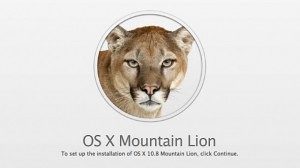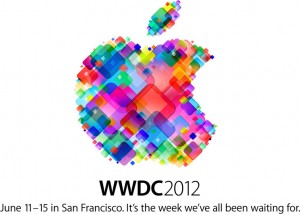In a recent article, mobile blogger Stephanie Faris talked about the increasing importance of mobile marketing. Faris cites a Morgan Stanley survey that projects mobile internet usage will surpass desktop internet usage by 2015. These projections are not only shocking, but they also demonstrate mobile’s meteoric rise to prominence.

If Morgan Stanley’s projections hold, mobile will be the fastest medium to overtake its predecessor. It took TV about twenty years to assimilate into American society. It took the desktop Internet usage around twelve years to overtake TV usage. The realization of the Morgan Stanley projections means mobile would need eight years (from the inception of the iPhone) to overtake desktop Internet usage.
While these projections are eye-popping, recent data supports these assertions. As of March 2012, 106 Million Americans owned a smartphone, according to a comScore survey. In addition 234 million Americans over the age of 13 use mobile devices. Considering the US population is slightly more than 300 million people, it’s safe to say mobile is embedded in our lives.
These macro stats give the big picture of mobile’s rise, but the best signal of mobile’s importance is our dependence on it on a daily basis. According to a recent Harris Interactive survey, 60% of Americans check their phones every hour. In addition, 73% of Americans panicked when they misplaced their phone. We are attached to our mobile devices, and that presents opportunities for merchants.
Mobile is the new marketplace, but it is still a largely unexplored territory. According to an AT&T survey mentioned in the Faris article, 75% of small businesses have a website, but only 31% have a mobile-enabled website. During this past holiday season, 61% percent of customers surveyed said they would go to a competitor’s site if they found a mobile-unfriendly site. Now it’s July – considering how fast mobile has found its way into the market – 6 months is a long time. How many companies have responded?
For any size business, the question is how to connect with customers through mobile. If customers are running their lives through mobile, then that’s where you need to find them. Mobile-friendly websites are one part of the equation; mobile apps another. The key is to define a strategy and go after it in a market that is 230 million strong in the United States and growing. It’s time to mobilize!

Month: June 2012
So, if you don’t know where to get started with a blueprint for your app, Rocket Farm Studios can take the pressure off.
WWDC: A Crystal Clear Display
This past week, Apple’s annual Worldwide Developer’s Conference (WWDC) demonstrated Apple’s commitment to introducing successful iOS features to other platforms. Apple revealed three major new products: Mountain Lion OS X, iOS 6, and the new MacBook Pro. While Apple also revealed new SDKs (Software Development Kits) for iOS and Mountain Lion, the first three products represented the most significant additions. Each one of these developments shows another manner in which Apple is building from its mobile platform to its other devices rather than from its computer platform.

Take Mountain Lion for example: many of Mountain Lion’s features make it more similar to iOS. According to Apple’s presentation, all apps will now run on all Macs, enabling casual gaming’s expansion to more devices. Perhaps the most convincing evidence of Apple’s push to integrate successful mobile features with all of its devices is that OS X updates will now happen via the App Store, consolidating Apple’s distribution to a single place. This singularity of its distribution methods solidifies the strength of Apple’s App Store, which recently wrote a check for $5 Billion dollars to its developers. A more detailed description of new features can be found here.
The iPhone and the iPad are now the hubs of your daily operations, and the widespread anticipation of iOS 6 supports this observation. Some of its new features include updated map software, a gift card/coupon/ticket/loyalty card app that consolidates these functions to one place on your phone, and an improved lost-phone-locator app. In addition to all of these functions, iOS 6 offers increased functionality for Siri, Apple’s voice activation software that is already active on all its devices. All of these functions suggest that Apple wants your iOS devices to be the center of your daily routine.
Apple’s new MacBooks are also incorporating iOS technology. The biggest improvement to the new MacBook is the retina display on the 15-inch MacBook. This technology is already present on the iPhone 4S & the iPad 2, and the arrival of a retina display MacBook demonstrates the increasing similarity of Apple’s devices to each other.

The most plausible reason for Apple’s trajectory is that Apple’s strength with developers and consumers is its uniformity. According to its WWDC keynote, there are 365 million iOS devices worldwide, including 66 million Mac users. As we wrote in our last post, companies requesting apps often push for an iOS version first because the platform is the easiest for which to develop, and iOS apps can reach the entirety of this massive audience. Apple’s increasing uniformity cements its place as the simplest platform with which developers can work.
So, if you don’t know where to get started with a blueprint for your app, Rocket Farm Studios can take the pressure off.
Reactions From WWDC–Apple Wins With Developers
With Apple’s Worldwide Developers Conference (WWDC) in full swing in San Francisco, we thought it an appropriate time to take stock of Apple’s continuing hegemony in the App market. According to a recent New York Times article by Nick Wingfield and Brian X. Chen, Android phones are outselling iPhones two to one, but app developers are still loyal to Apple because it is more lucrative to develop for iOS than to develop for Google’s Android. The Conference demonstrated this loyalty when Apple released tickets for its Worldwide Developers Conference (WWDC) in San Francisco at 8:30 AM EST, and tickets sold out within two hours. While the WWDC presents more than just mobile technology, Apple’s new operating system, Mountain Lion OS X, is expected to further integrate Mac devices with iPhones.

So the question is, why are developers so loyal to Apple? Would it not make sense to develop for the most popular platform, Android?
Leaders from both sides of the conflict voiced their logic on the trajectory of the developers’ market. In a 2010 interview, Steve Jobs suggested that Apple iPhones would retain their large share of the developers’ loyalty because many providers, all with different operating systems and technology, run the Android platform while Apple consolidated all of its apps to the iPhone platform. Conversely, Eric Schmidt, the executive chairman of Google, asserted in December of 2011 that mobile developers would begin developing more for Android within six months because Androids formed a larger part of the market and offered more opportunity for profit.
While Steve Jobs made his assertion two years ago, lightyears ago in the rocket-fast mobile market, statistics show that Jobs was correct. Developers prefer Apple because it is more unified, and more profitable. The Wingfield and Chen article cites a recent Flurry report that found that for every $1 of revenue on an iOS app, the developer could expect $.24 for an Android app. While Android phones may be more popular, its multiple platforms and varied requirements limit its ability to compete with the stalwart Apple App Store.

In concluding their article, Wingfield and Chen suggest that developers might switch to Android as its market share increases, but as of now, Apple appears to have outfoxed its competition with its simple, unified approach. Apple is leading the way in mobile technology integration: with the advent of Mountain Lion, Apple computers, tablets, and iPhones will all run on a similar operating systems, encouraging developers to cater to its users needs. Android, although the more popular phone, still has to catch up to Apple in standardizing its platform to fit smartphones, and eventually tablets and computers.
Our personal experience on the Farm supports these findings. Our clients generally request an iOS version of the product first or both an iOS version and an Android version simultaneously. In cases in which the client request an iOS version only, once the app is out and we’ve gotten initial feedback from the market, we look into porting for Android devices. Apple has positioned itself well because developers and clients alike want to keep the process simple at first, porting for a single device that can reach a large audience. Apple’s commitment to user-friendly, streamlined designs makes them the gateway to App development.
So, if you don’t know where to get started with a blueprint for your app, Rocket Farm Studios can take the pressure off.



